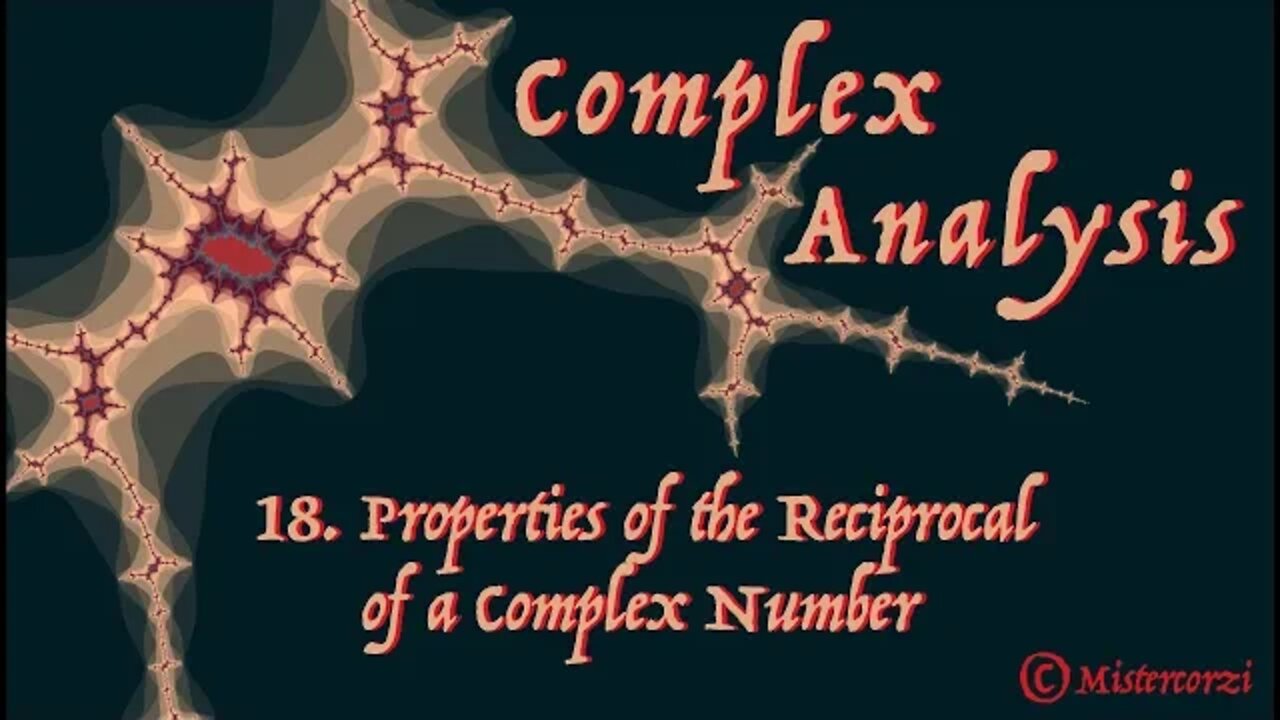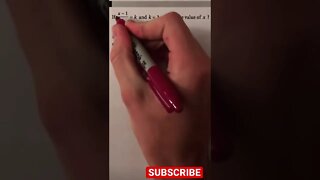Premium Only Content

18 Properties of the Reciprocal of a Complex Number
Finding the reciprocal of a complex number involves the multiplicative inverse of its modulus and the additive inverse of its argument. An animation (using GeoGebra) is used first of all to explore some properties of the reciprocal including its relationship to the unit circle (outside / inside / on). Observations are then given a mathematical underpinning.
Detailed solutions of the following examples are then given:
1. Use a polar form of -1-i to evaluate its reciprocal.
2. Prove that if the conjugate of z equals its reciprocal then IzI=1.
3. Prove the converse statement of example 2.
The viewer is encouraged to attempt these questions before watching the solutions.
Chapters:
00:00 Introductory animation
05:28 Mathematical derivation of results
15:30 The examples
15:45 Solution to Example 1
19:40 Solution to Example 2
23:00 Solution to Example 3
25:12 Links to the Playlist "Complex Numbers"
Previous videos in this series are:
01 What is a Complex Number?
02 Adding, Subtracting and Multiplying Complex Numbers
03 Dividing Complex Numbers
04 Complex Conjugates
05 The Field of Complex Numbers
06 The Complex Plane
07 The Modulus of a Complex Number
08 Distance on the Complex Plane
09 Properties of the Modulus of a Complex Number
10 Complex Numbers and the Unit Circle
11 The Polar Form of a Complex Number
12 The Principal Argument of a Complex Number
13 The Geometrical Effects of Multiplying by a Complex Number
14 Multiplication of Complex Numbers in Polar Form
15 The Principal Argument when Multiplying Complex Numbers
16 The Geometrical Effects of Dividing by a Complex Number
17 Division of Complex Numbers in Polar Form
Key words: Reciprocal, modulus, conjugate, Principal value, argument, unit circle
M337, Open University, Unit A1, complex analysis
-
 0:44
0:44
djae1991
2 years agocomplex number algebra
3 -
 0:44
0:44
djae1991
2 years agoSAT complex number question
4 -
 30:26
30:26
The Why Files
7 days agoThe Pascagoula UFO Incident | When Nightmares Come True
68.3K60 -
 1:40:28
1:40:28
Roseanne Barr
1 day ago $62.82 earnedUnredacting Jesus with Billy Phillips | The Roseanne Barr Podcast #74
154K168 -
 55:49
55:49
Stephen Gardner
22 hours ago🔥SECRET TRAPS laid for Trump, RFK & ELON | Megyn Kelly worries for Trump's life, CIA vote algorithm.
52.5K103 -
 1:24:47
1:24:47
Kim Iversen
21 hours agoMafia Tactics: A Private Equity Firm Forced Her Into An Abortion To Retaliate Against Her Speaking Up.
225K272 -
 2:36:29
2:36:29
Fresh and Fit
20 hours agoCall-In Show
209K43 -
 4:08:29
4:08:29
Nerdrotic
23 hours ago $110.76 earnedHollywood in PANIC! Woke Celebrity Meltdown, Penguin Finale CRUSHES! | Friday Night Tights #328
236K50 -
 1:41:22
1:41:22
The Officer Tatum
18 hours agoLIVE: Trump NOMINATES Karoline Leavitt, Whoopi "SMOLLETT" EXPOSED, & MORE | Officer Tatum Show EP 8
108K337 -
 30:25
30:25
Glenn Greenwald
20 hours agoGlenn Takes Your Questions Post-Election On The Trump Admin & More
201K125